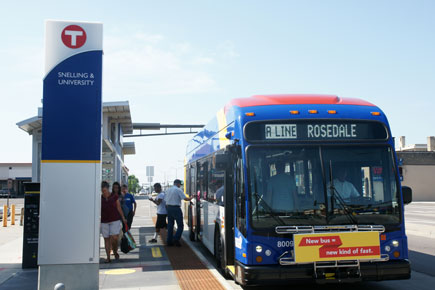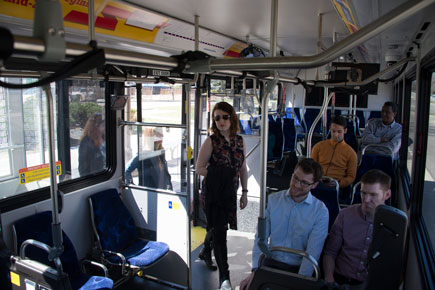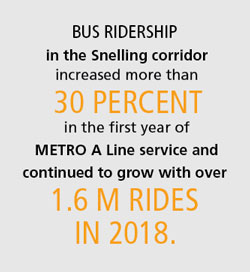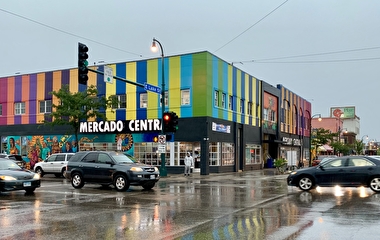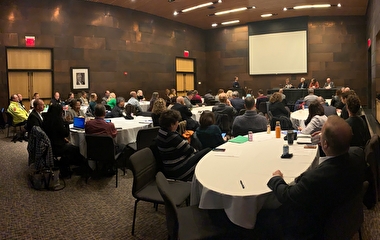The METRO A Line, the first arterial bus rapid transit (BRT) line in the Twin Cities transit network, launched service in the summer of 2016 along the high-demand Snelling Avenue corridor. Since then, the line’s ridership has grown rapidly, and the overall response has been overwhelmingly positive. More information, however, was needed about the operations and impact of the line.
To fill this need, U of M engineering and planning researchers teamed up to answer some key questions. Led by Alireza Khani, the team analyzed the line’s impacts on both transit capacity and traffic flow in the corridor. The researchers also studied what riders and corridor residents think of the line and which factors are most important in rider satisfaction.
The METRO A Line is designed to give Twin Cities transit users a fast, reliable, and safe transit option (see sidebar). It runs on a regular traffic lane (an arterial street) with other vehicles and stops at the curb rather than pulling into a bus bay. Off-board fare payment and all-door boarding keep stop times short.
To determine transit capacity, researchers analyzed passenger count data for the A Line and for Route 84 (the local bus service on Snelling) before and after the launch. “We found that the METRO A Line significantly increased the maximum transit capacity per hour along the Snelling corridor,” says Khani, an assistant professor in the Department of Civil, Environmental, and Geo- Engineering and the study’s principal investigator.
The A Line appears to attract additional riders, encourage trip transfers, and promote transit use for non-work trips. “Average bus occupancy on the A Line was higher than previous bus service in the same corridor for almost all stops and hours of the day, particularly during the afternoon,” Khani says.
At the same time, there was no measurable impact on general traffic. The team used video cameras at two of the busiest METRO A Line stations to record and measure traffic conditions during both regular and special event (Minnesota State Fair) traffic periods. “When an A Line bus stopped at a station, there was no significant impact on traffic flow or the number of vehicles stopped at intersections,” he says.
Perceptions of the line were largely positive. Riders were more satisfied with the overall service of the A Line than with local buses, says Professor Jason Cao of the Humphrey School of Public Affairs, the study co-investigator. Their satisfaction is equivalent to the higher ratings given to Twin Cities’ express buses, light rail, and commuter rail.
Non-riders in the corridor also had largely positive perceptions of the A Line. Some believe it improves the image of the corridor, Cao says.
The top three factors influencing overall rider satisfaction with A Line service were easy fare payment, hours of operation, and handling of concerns and complaints, Cao adds. The final report includes recommendations for prioritizing A Line improvements and planning elements of future lines.
Next up, Metro Transit plans to launch the C Line this spring on Penn Avenue North, with several additional lines in development. “The study underscores that investing in transit speed and customer experience attracts more riders,” says Katie Roth, Metro Transit’s manager of arterial BRT. “And as we continue to grow the region’s network of fast, frequent, and reliable bus transitways, this research provides key feedback on how to use tools in the street design toolbox to keep transit moving.”
The project was sponsored by the Minnesota Department of Transportation through the Transitway Impacts Research Program.
